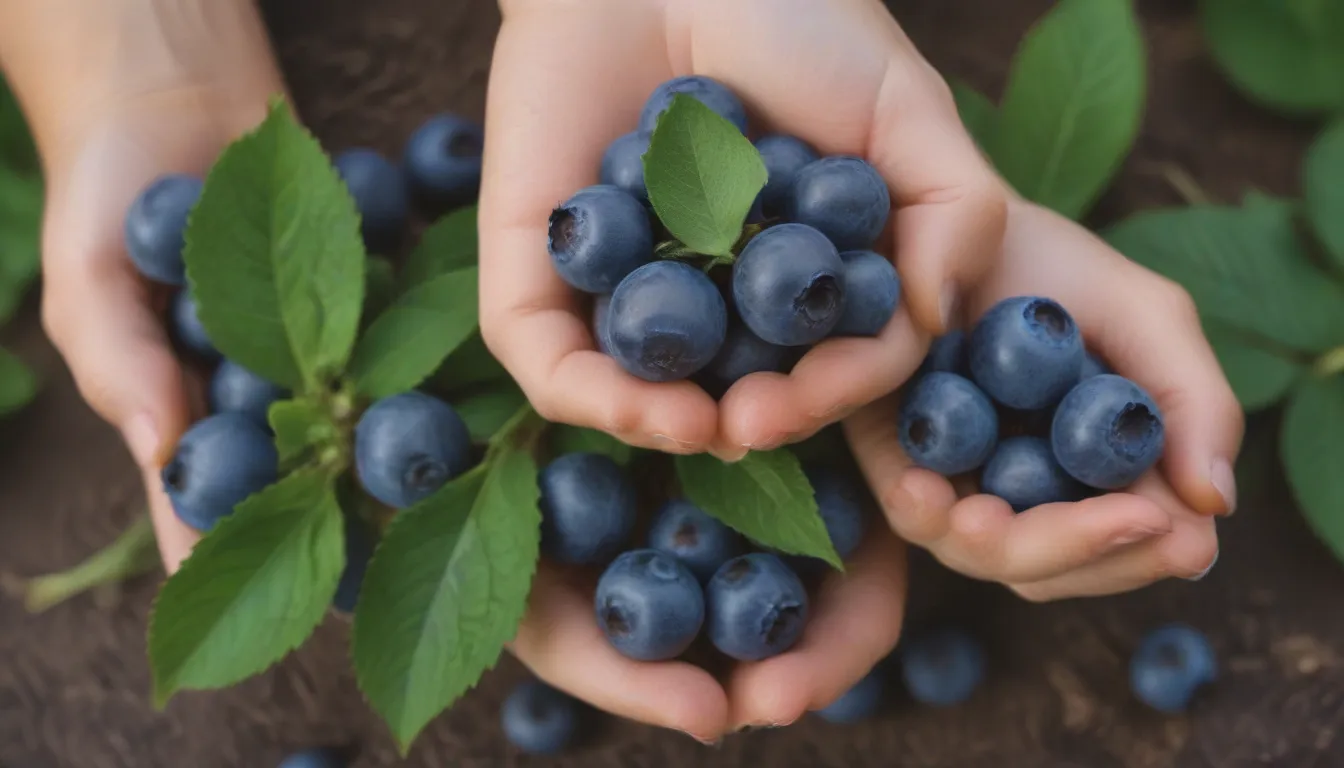Everything You Need to Know About Fertilizing Blueberries for Healthy Plants

Are you a blueberry enthusiast, looking to grow the biggest and juiciest blueberries in your backyard? If so, you’ve come to the right place! Blueberry plants are a fantastic choice for both novice and experienced gardeners, as they are fairly easy to grow and maintain. However, to ensure your blueberries reach their full potential, it’s essential to fertilize them with the right products at the right time.
In this comprehensive guide, we will walk you through everything you need to know about fertilizing blueberries for healthy plants. From the ideal conditions for growing blueberries to the best fertilizers and fertilizing techniques, we’ve got you covered. So, grab your gardening gloves and let’s dive in!
Conditions for Growing Blueberries
Before we delve into the world of blueberry fertilization, let’s first understand the ideal conditions for growing blueberries. Blueberry plants thrive in environments that are protected from high winds and receive six to eight hours of full sun daily. Additionally, they prefer acidic soil that is well-draining and rich in organic matter, with a pH level ranging from 4.0 to 5.5.
Whether you’re growing blueberries in pots or directly in the ground, ensuring these optimal conditions will set the stage for healthy and productive plants.
When to Fertilize Blueberry Plants
Timing is everything when it comes to fertilizing blueberry plants. While the exact timing may vary based on your specific soil pH and plant’s health, experts generally recommend fertilizing blueberries at least once a season, with the possibility of up to three applications.
- Early Spring: Fertilize your blueberry plants before they begin producing foliage or at the first signs of foliage in early spring.
- Early Summer: Consider a second round of fertilization roughly six weeks after the initial application in early summer.
- Early Fall: For a final boost before winter sets in, fertilize your blueberries approximately one month before the first frost in early fall.
Always consult the recommended application rates and timing for your chosen fertilizer before applying it to your blueberry plants. If you notice pale leaves or slow growth, it may be time to test the soil pH and consider fertilizing.
Tip
Avoid fertilizing young blueberry plants, as excessive nitrogen can harm them. Wait until their second year to start the fertilization process.
How to Fertilize Blueberries
Now that you know when to fertilize your blueberries, let’s talk about the best practices for applying fertilizer. While you can opt for a water-soluble fertilizer, many experts recommend an acidic, slow-release fertilizer in granule form. This type of fertilizer gradually releases nutrients over time, promoting the long-term health of your blueberry plants.
Here’s a step-by-step guide on how to fertilize your blueberries effectively:
- Even Application: Sprinkle the fertilizer granules evenly around the base of the plant, extending outward towards the edge of the plant’s canopy.
- Avoid Disturbing Roots: Blueberry plants have shallow roots, so there is no need to rake or turn over the soil after applying fertilizer. Avoid disturbing the roots to prevent damage.
- Mulch: Some gardeners like to add a thin layer of mulch (no more than two inches) after fertilizing to help insulate the plant’s roots. Wood chips or dried, shredded leaves make good mulch options.
Tip
Remember, how often you fertilize is just as critical as the amount of fertilizer you apply. Over-fertilization can lead to excessive foliage growth at the expense of fruit production.
The Best Fertilizers for Blueberries
Choosing the right fertilizer is vital for the health and productivity of your blueberry plants. The best fertilizers for blueberries should accomplish two primary goals: adding nitrogen and acidifying the soil. Nitrogen is essential for promoting robust growth and juicy berries in blueberry plants.
- Ammonium Sulfate: This fertilizer provides a gradual release of nitrogen and helps maintain optimal soil pH for blueberries.
- Elemental Sulfur: Another option for supplying nitrogen gradually while acidifying the soil for blueberry plants.
- Organic Granular Fruit Fertilizer: If you prefer organic options, look for a granular fruit fertilizer designed for acid-loving plants like azaleas and rhododendrons.
Before applying any fertilizer, it’s crucial to test your soil pH to determine its current status and the nutrients it lacks. Maintaining a soil pH between 4.0 and 5.5 will ensure your blueberry plants can absorb essential nutrients effectively.
Tip
Aim to fertilize your blueberries based on their specific needs and avoid over-fertilizing, which can lead to nutrient imbalances and potential plant damage.
Conclusion
In conclusion, fertilizing blueberries at the right time with the appropriate products is key to cultivating healthy and productive plants. By following the guidelines outlined in this article, you can ensure your blueberries receive the essential nutrients they need to thrive and produce delicious fruits for years to come.
Remember, gardening is a journey of learning and experimentation, so don’t be afraid to tailor your fertilization routine to suit your unique blueberry plants’ needs. With patience, care, and the right fertilizer, your blueberry garden is sure to flourish!





